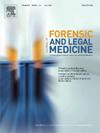"它改变了我的整个思维":在为寻求庇护者撰写的医疗宣誓书中识别叙事要素。
IF 1.2
4区 医学
Q3 MEDICINE, LEGAL
引用次数: 0
摘要
医疗宣誓书对寻求庇护者至关重要。研究表明,有医疗宣誓书(与没有医疗宣誓书相比)的申请成功率要高出一倍。针对临床评估人员的面谈流程培训资源很多,但关于宣誓书撰写流程的指导却很少。我们的目标是找出成功(与不成功)庇护申请者的医疗宣誓书中最常见的叙述要素,为临床评估人员提供进一步的写作指导。我们的假设是,这些要素如果得到深思熟虑的运用,将有助于临床评估人员在美国移民系统中最好地代表他们的客户。我们重点关注最弱势的申请人:那些在一年截止日期后申请的申请人。利用基础理论,我们对 23 份在一年期限后提交的宣誓书进行了叙事要素编码。我们发现,在一年期限后申请并获得成功的寻求庇护者的医疗宣誓书中,有七种叙事元素较为常见:(1)建议采取具体的临床干预措施;(2)引用客户的升华辞藻;(3)使用标题;包括描述以下内容的轶事:(4)客户形成的人际联系;(5)典型的女性角色;(6)爱情故事;或(7)感悟时刻。本文章由计算机程序翻译,如有差异,请以英文原文为准。
“It changed my whole entire thinking”: Identifying narrative elements in medical affidavit writing for asylum seekers
The medical affidavit is critically significant for asylum seekers. Studies have shown that asylum seekers applying with a medical affidavit (versus without a medical affidavit) have double the success rate. There are many training resources for clinician-evaluators on the interviewing process, but little instruction exists on the affidavit writing process. Our objective was to identify the most common narrative elements in medical affidavits of successful (versus unsuccessful) asylum seekers to provide further writing guidance for clinician-evaluators. We hypothesized that these elements, when thoughtfully employed, help clinician-evaluators best represent their clients in the US immigration system. We focused on the most vulnerable applicants: those applying after the one-year deadline. Using grounded theory, we coded 23 affidavits filed after the one-year deadline for narrative elements. We identified seven narrative elements more common in medical affidavits of asylum seekers who filed after the one-year deadline and were successful: (1) Recommending specific clinical interventions; (2) Quoting elevated diction by the client; (3) Using headlines; including anecdotes that describe (4) The client forming human connections, (5) Archetypal female characters, (6) Love stories, or (7) Moments of realization.
求助全文
通过发布文献求助,成功后即可免费获取论文全文。
去求助
来源期刊

Journal of forensic and legal medicine
MEDICINE, LEGAL-
CiteScore
2.70
自引率
6.70%
发文量
106
审稿时长
57 days
期刊介绍:
The Journal of Forensic and Legal Medicine publishes topical articles on aspects of forensic and legal medicine. Specifically the Journal supports research that explores the medical principles of care and forensic assessment of individuals, whether adult or child, in contact with the judicial system. It is a fully peer-review hybrid journal with a broad international perspective.
The Journal accepts submissions of original research, review articles, and pertinent case studies, editorials, and commentaries in relevant areas of Forensic and Legal Medicine, Context of Practice, and Education and Training.
The Journal adheres to strict publication ethical guidelines, and actively supports a culture of inclusive and representative publication.
 求助内容:
求助内容: 应助结果提醒方式:
应助结果提醒方式:


